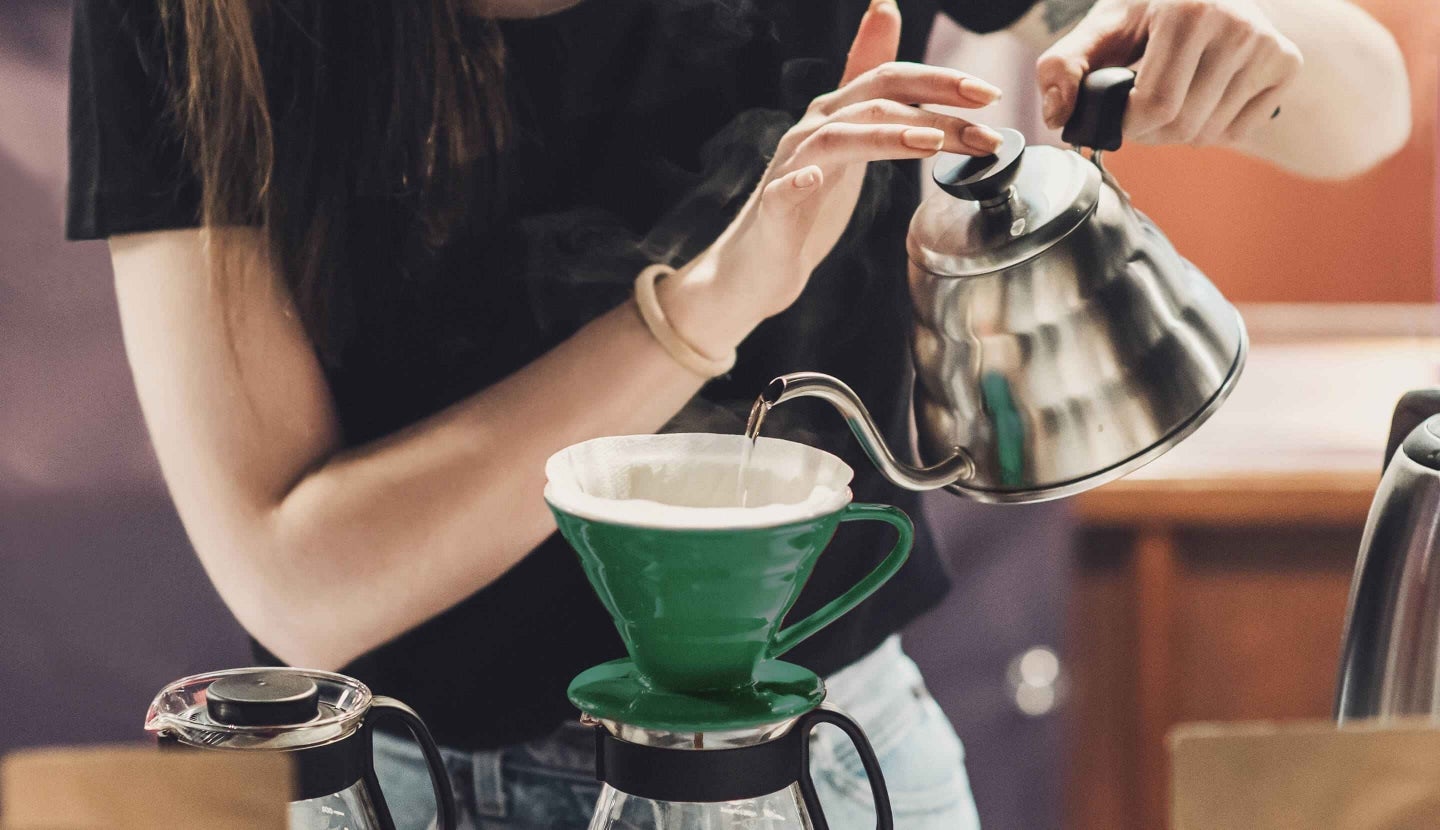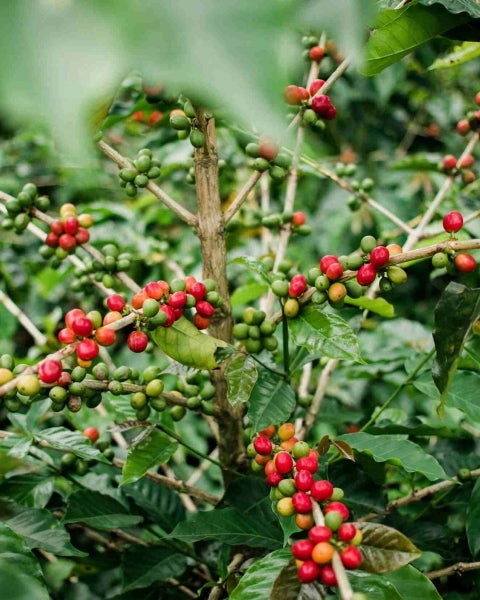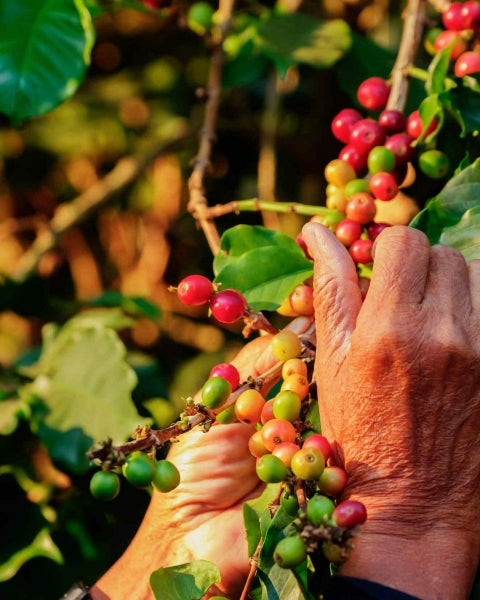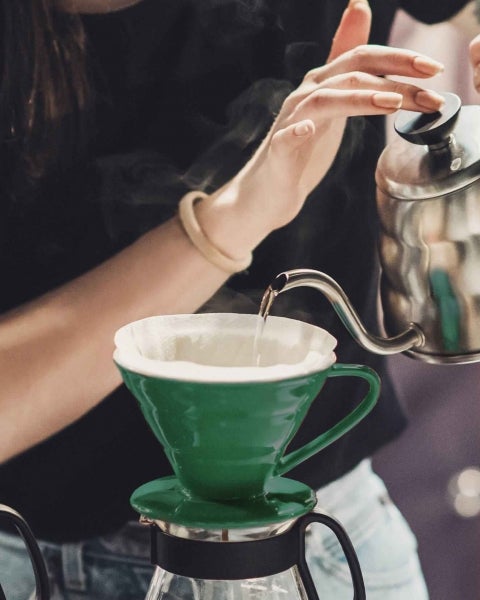Starbucks® and the Starbucks® logo are used under license by Nestlé. Pike Place is a registered trademark of The Pike Place Market PDA, used under license. Nespresso® and NESCAFÉ® Dolce Gusto® are registered trademarks of Société de Produits Nestlé S.A. All other trademarks are the property of their owners.
TASTING YOUR COFFEE
There’s an art to slowing down and truly tasting your coffee, from its aroma and acidity to its body and flavour. Here’s how to master it.
EXPLORING TASTE The Art of Tasting
When did you last stop what you were doing and take a few moments to fully taste the coffee in your cup?
When you pay close attention to your coffee’s many characteristics, a sensory world opens up.
Many variables affect the flavour of coffee: where the coffee is grown, what type of coffee is grown, how the coffee is grown, how the fruit is removed from the bean, how coffee is blended and roasted, and how coffee is brewed. And those are just some of the factors.
Want to know how to hold a coffee tasting? Let’s explore taste and its many dimensions. One thing’s for sure – deepening your understanding of taste is a rewarding journey.
FOUR STEPS
If you’re just exploring how to truly taste your coffee, it’s worth learning these four important steps: smell, slurp, locate, and describe.
First up, smell. Always smell a coffee before you taste it. Inhale deeply. Your mouth can distinguish five tastes – sweet, salty, bitter, sour, and umami – but your nose can differentiate one trillion aromas.
Next is slurp. Take a good, noisy slurp of your coffee. Don’t be shy. This will spray the coffee across your tongue and palate, letting you taste all the subtleties.
Now, locate. Think about how the coffee feels in your mouth. What is its weight or thickness? Where on your tongue do you experience the flavours?
And, lastly but vitally, describe. What words would you choose to describe your tasting experience? The aroma, the flavours, how the coffee feels in your mouth. Does your tongue detect much acidity in the coffee? What other flavours might you use for comparison?
HOW TO TASTE COFFEE
So, when you’re tasting your coffee, what should you look out for? Focus on and describe these four qualities: aroma, acidity, body and flavour – one at a time. As you’ll discover, these characteristics form a complete taste “profile” of a coffee.
What does a flavour profile look like? Here’s an example, directly from Starbucks® master tasters: “Well-rounded with subtle notes of cocoa and toasted nuts balancing the smooth mouthfeel”. And here’s one more for good measure: “Earthy and layered with notes of fresh herbs and a lingering spice”.
With a little practice, you can start devising your own tasting characteristics, based on your personal, unique experiences of the coffees you taste. A good way to start is to read the flavour notes on a bag of Starbucks® coffee and try to locate those flavours as you taste the coffee.
COFFEE ACIDITY
Acidity is the feeling on the sides and tip of your tongue. When tasting and describing coffee, acidity doesn’t refer to the pH content. It refers to the tangy sensation on your tongue.
Coffee drinkers are sometimes confused about why they like acidity in coffee. Acidity is a sensation you’ll likely find in some of your favourite high-quality coffees.
When you think of acidity, think of how the coffee feels in your mouth. To help you understand acidity, think about how, like bananas and oatmeal, coffees with low acidity offer a rounded, smooth sensation on your tongue. And consider how, like oranges and lemons, high-acidity coffees offer a concentrated, lively sensation on your tongue.
COFFEE BODY
Body is the weight or thickness of the coffee on your tongue when you slurp it. It’s a characteristic you might not have considered before.
Here’s how to make more sense of the concept of body: like fat free milk, light-bodied coffee is thin with very little texture or weight on the tongue. And, like full cream milk, a full-bodied coffee has a heavy body – it’s creamy, thick and lingers on the tongue.

TIME TO TASTE
Next time you make yourself a cup of coffee, take a moment to sip, reflect and really notice the taste.

CITRUSY ZEST AND ZING
Citrusy coffees offer a concentrated, lively sensation on your tongue, like oranges and lemons.

MIX IT UP
Brew the same coffee using two different methods and see how each cup compares.
COFFEE FLAVOUR
Flavour is how a coffee tastes, and at first it might be hard to put it into words. When describing flavour, start with the basics.
Maybe the coffee tastes sweet like chocolate or caramel. Maybe it has a livelier, fruitier sweetness like a cherry or raspberry. There may be sour flavours that make you think of lemon, grapefruit or even wine. You might detect flavours that are like nuts or vanilla.
COMPARING TWO COFFEES
Tasting coffee is all about comparing and contrasting. Experiment with these four characteristics and think about how you’d describe your coffee. If you need added inspiration, remember to take a look at the tasting notes on your favourite Starbucks® coffees.
Another great way to deepen your tasting experience is to compare two coffees. Take coffees from two different regions, for example, then see which is more bitter, which has more body, and how their aromas compare.
You could also compare the same coffee, made using two different brewing methods. You’ll soon discover that the brewing method you use contributes to your coffee’s taste characteristics.
COFFEE AROMA
Aroma is the way something smells. Your nose can pick up one trillion different aromas. Smelling and describing the aroma of a coffee is the best way to start learning. You may smell a hint of chocolate, the rich aroma of nuts, or a touch of warm spices.
There’s no wrong answer when describing what a coffee smells like. What it smells like to you may be different than what it smells like to someone else.
As you explore and experiment with coffee, it’s worth taking time to really taste what’s in your cup. Along your tasting journey, you’ll discover your own unique likes and preferences and learn to talk about what you love and why.




